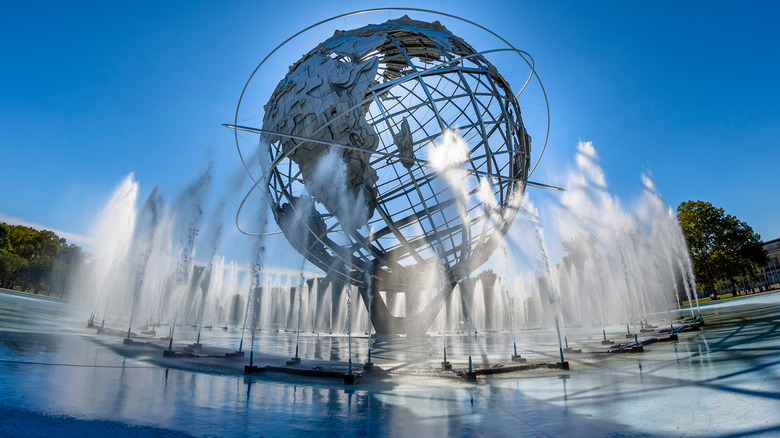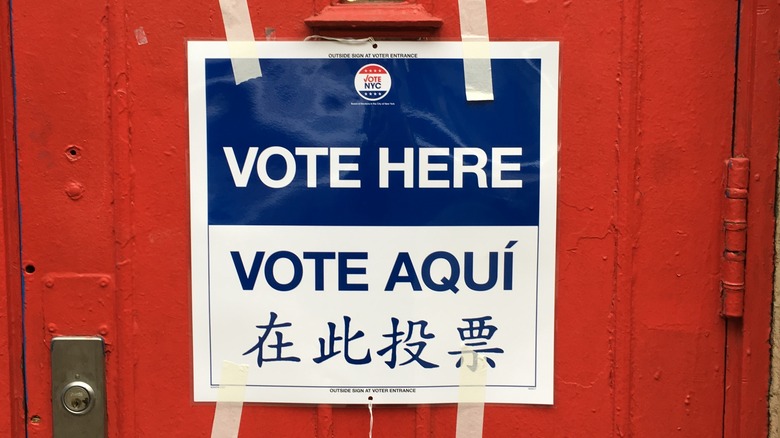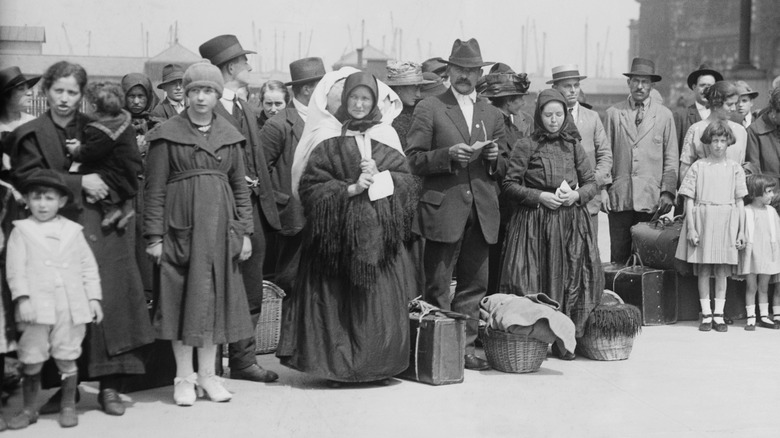The Staggering Number Of Languages That Are Spoken In New York City
Anyone who has visited New York City can tell you that English is only one of its many languages. Take a short walk from any subway stop, and you might overhear conversations in Cantonese, Yiddish, Spanish, Egyptian Arabic, or Bengali — and those are just a fraction of the possibilities. You can see street signs in Russian in Brighton Beach. The city's social services department has web pages and a telephone hotline entirely in Haitian Creole.
You don't even have to visit the Big Apple to get a sense of its polyglot glory. On YouTube, an influencer who goes by the name of Xiaoma, and who possesses an uncanny capacity for learning languages, makes a splash by wandering his native New York City and speaking to people in their native, non-English languages. His videos show Mandarin, Punjabi, Wolof, and more, spoken at work and in everyday life.
People who don't like New York have compared it to Sodom and Gomorrah, the wicked cities in the Old Testament (as alluded to in Reuters); though a better comparison would be Babel.
Hundreds of languages
But exactly how many languages are spoken in the modern Babel? The Endangered Language Society, a New York-based nonprofit that studies minority and disappearing languages, has been looking into that question for some time. In December 2019, just months ahead of the 2020 U.S. Census and weeks before the United Nations designated 2019 the Year of the Indigenous Language, the nonprofit released a carefully compiled map of New York City's languages, based on 1,200 discrete geographic landmarks across the five boroughs.
The data shows a staggering 700 languages spoken in New York. It also attempts to map out where these languages are spoken, although the ELS admits that this can be quite a difficult task in "a city where a single building or block can host speakers of dozens of languages from across the globe."
Still, there are some clear patterns. The borough of Queens, for instance, seems to have the highest density of Asian languages. Harlem, and the border of Manhattan and the Bronx generally, is home to a cluster of West African languages. Meanwhile, along the water in south Brooklyn, a "microcosm of the former Soviet Union" speaks Russian, Uzbek, Eastern Armenian, and Tatar. Just to the north, a Mizrahi Jewish community speaks its own variety of Arabic.
The most common New York languages
About 38% of New York's languages come from Asia, while just under a quarter come from Africa, according to Timeout, which parsed through the data. They include Buginese, the language of the 5 million ethnic Bugis of Indonesia (per Britannica), and Akan, the mother tongue of about 44% of Ghanaians (via Rutgers University).
Less than a fifth came from Europe, although this category was somewhat more arcane than the others. The Italian dialects made up a substantial list, including not only Sicilian and Neapolitan, but Gallo-italico di Basilicata, the dialect derived from medieval Provençal and spoken in a few mountain villages in the continental south. You can see it on the map in the Chinatown/Little Italy inset.
However, it's important not to misinterpret the diversity of languages spoken in New York City. Government data from 2015 shows that Spanish is the most common language spoken in New York, after English — not surprising, given the vast Puerto Rican, Dominican, Cuban, and other Latin American communities there. Each borough is different, but overall the other contenders are, in descending order: Chinese (including Mandarin and Cantonese), Russian, French Creole, Bengali, and Yiddish.


